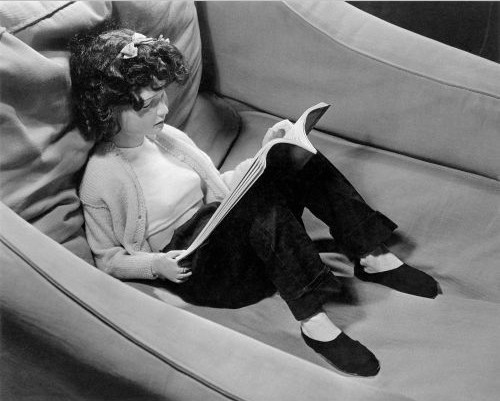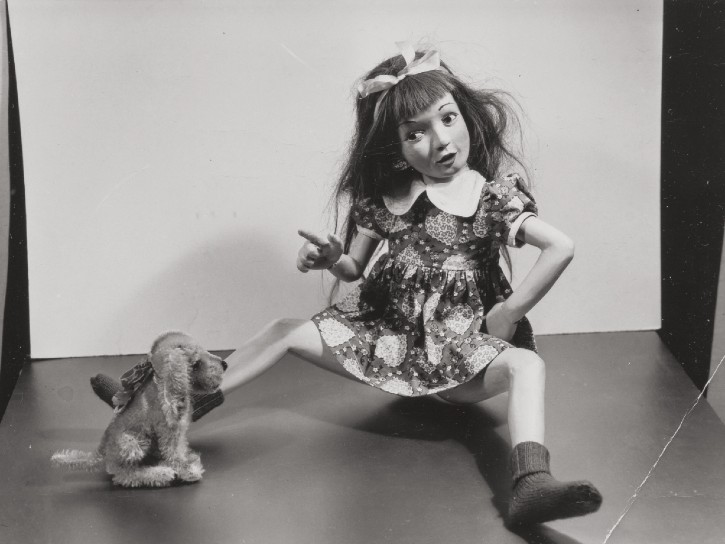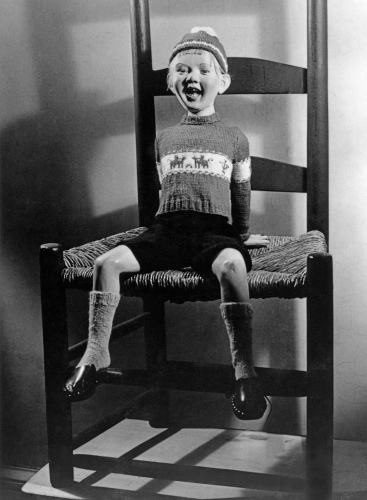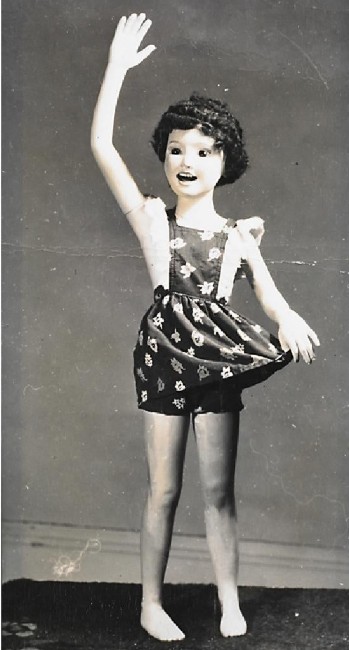
NEW YORK – Morton Bartlett (1909-1992) was perhaps one of the best examples of what an Outsider artist is. The lifetime bachelor was remembered by his neighbors and friends in Boston as a kind, sweet man but perhaps lonely also.
Craving a family of his own that eluded him as an adult, he created his own. A self-taught sculptor and photographer, he lovingly and meticulously created 15 figures of 12 girls and three boys (the latter created after the artist’s likeness). These figures, sometimes called dolls, approximately half-life-size to scale, were very realistic, lifelike with unnervingly precise facial expressions and anatomically correct underneath their clothing. Bartlett dressed them in outfits he made by hand and then posed them in everyday scenes, shooting hundreds of photographs from 1936 to 1963. It took him about a year to make each doll and he never sold a single one, rejecting many offers.

“They weren’t for sale and in fact the true definition of Outsider Art is work that is made not to be sold commercially,” says New York art dealer Marion Harris. “That has sort of changed now but that was one of the original definitions so the fact that he never meant them to be sold meant a lot to me.”
It was perhaps fate and luck that Harris found the collection of Bartlett’s life work. The year was 1992 and it was the first time in 10 years that she was not set up at the Pier Antique Show in New York as a dealer. Deciding not to go in early, she instead had a relaxing breakfast with her husband and didn’t arrive until 11 a.m. She didn’t expect to find much to buy as most serious buying occurs in the opening hours. By a stroke of luck, she came upon antique dealer Bruce Emond’s booth at just the right time. Emond had acquired the collection of Bartlett’s things after his death from the lawyer settling his estate and it was all in his booth: boxes and boxes of sketches, photographs, dolls and doll parts, over 200 photographs and correspondence between Bartlett and admirers of his work.

“It stopped me in my tracks, and I asked if they were available and he said ‘Well, it is now because they were on hold up until 30 seconds ago,’” she recalled. The visceral reaction she had to these items was enough to make her immediately buy the whole collection, virtually sight unseen. She then spent the better part of the next year researching Bartlett and his work, having restoration done and cataloging the work before launching a major exhibition to formally introduce his work to the public.

Museums, including the Collection de l’Art Brut in Lausanne, Switzerland, which has over 40 works of Bartlett’s art, and Outsider Art collectors responded in a similar fashion as she did, taken with this one man’s artistic talent that he mostly kept private. While his work was not a secret, he kept it under wraps and did not actively seek attention. As an engagement present to his goddaughter, though, Bartlett allowed himself to be interviewed for an article in Yankee magazine in 1962 written by his goddaughter’s fiancee, a recent college graduate and aspiring writer. The attention he received after the article and the many requests to sell, however, resulted in him packing the dolls away. Though he reportedly carried photographs of his figures with him, the dolls were wrapped up in 1963 Boston newspapers and didn’t see the light of day until after Bartlett’s death.

One of several museums taken with Bartlett’s work, the Metropolitan Museum of Art in New York City acquired one of Bartlett’s figures and several of his photographs, making him one of the earliest Outsider artists to join their collection. “The photographs, which were discovered along with the sculptures shortly after Bartlett’s death, are provocative and psychologically complex; like film stills from a private movie, they captivate the eye and tease the imagination,” according to the museum’s website.
“So many of his photographs were in everyday poses like at the beach, ballet class, reading a book on the sofa, very much everyday activities and just the skillset is remarkable,” she said. “He made all the dolls, arranged the lighting and did all the photographs … all in his kitchen.”
Asked what she learned about Bartlett that most surprised her, she debunked the myth that Bartlett was an eccentric recluse. “I think what surprised me the most was that he was so well-liked and so meticulous. Everybody who knew him said how kind he was.”

Among his photographs, a quality of universality pervades and in the everyday activities depicted, viewers can relate. “There’s really a top three,” Harris said of his most desirable photographs that collectors gravitate toward. “It’s the girl reading in a chair [which appears on the cover of the catalog she put out]. Another one in the catalog I have is of two sisters in bed, one reading, one asleep, and the child reprimanding her toy dog.”
The detailed expressions in the figures’ faces and the range of emotions from a girl’s false-stern look as she scolds her toy dog to a gap-toothed boy’s unabashed joy in spending the day fishing are what draws viewers in. Decades after they were made, the photographs retain a sparkling vitality that belies the fact that their sitters were never living.



